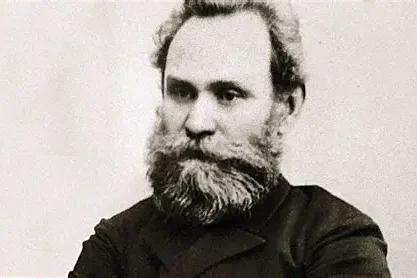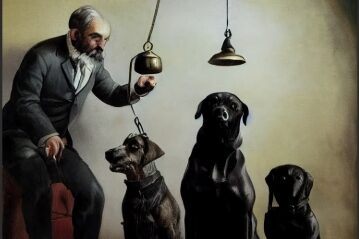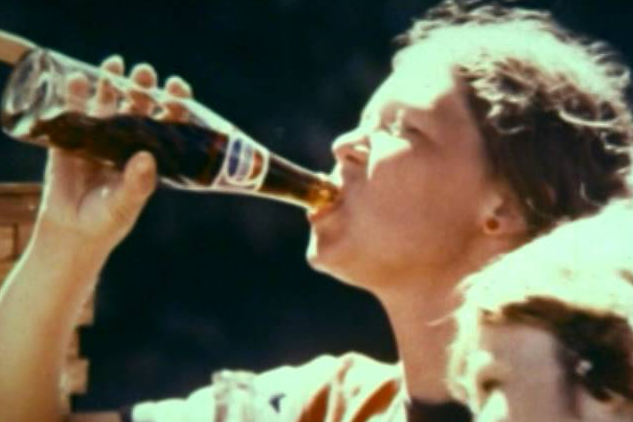1. The Curious Beginning

In the late 1800s, Russian physiologist Ivan Pavlov was studying digestion in dogs, not behavior. But he noticed something curious. His dogs began salivating before food appeared, reacting to the footsteps of the lab assistant who usually fed them. That simple observation became the seed of one of history’s most famous experiments. Pavlov realized that the dogs had learned to connect one event with another. His curiosity turned into discovery, revealing that much of behavior could be taught through association. It was the beginning of a new way to understand learning, emotion, and habit. What started with a dog’s drool reshaped how the world viewed the human mind.
2. The Bell and the Bowl

Pavlov’s idea grew into a carefully crafted experiment. He began ringing a bell before feeding his dogs. At first, the sound meant nothing. But after several repetitions, the dogs began salivating at the sound alone, even when no food was present. Pavlov called this classical conditioning, showing that neutral objects could trigger automatic responses when paired with meaningful ones. The bell became a symbol of learned behavior, where one small sound could evoke a powerful reaction. That finding became a cornerstone of psychology, proving that habits and emotions could be trained through repeated connections, forever changing how we study behavior.
3. A New Science of Behavior

Before Pavlov’s discovery, most scientists believed behavior was guided by instinct or conscious thought. His experiment revealed something different. Much of what we do happens automatically, shaped by experiences we hardly notice. This idea laid the foundation for behavioral science, showing that people, like animals, can be conditioned by patterns and associations. It explained why certain smells, sounds, or places trigger emotions we can’t easily control. Pavlov’s dogs taught the world that human action is often less about choice and more about response. With that, a new science of understanding began, reaching far beyond the walls of his laboratory.
4. From Labs to Living Rooms

Pavlov’s theory soon stepped outside the lab and into ordinary life. Everyday experiences reflected the same conditioning he discovered in dogs. The smell of cookies baking might bring comfort, while the sound of sirens might cause fear. Our brains quietly connect sensations with emotions, forming invisible links that shape our routines. These learned reactions influence what we like, dislike, and remember. Pavlov gave the world language to describe these invisible habits. What began as a study of canine behavior turned into a window into human experience, proving that we, too, live by unseen associations built through repetition.
5. The Birth of Advertising Tricks

Marketers saw instant value in Pavlov’s findings. If dogs could learn to associate a bell with food, humans could learn to associate feelings with products. Advertisers began pairing brands with happiness, laughter, or beauty. A soda wasn’t just a drink anymore; it became joy in a bottle. A car became a symbol of confidence and success. Over time, these emotional pairings made products irresistible. Pavlov’s discovery gave rise to modern marketing psychology, turning the science of learning into a tool for persuasion. Every jingle, logo, and slogan that stirs emotion traces back to a dog, a bell, and a bowl.
6. The Politics of Conditioning

Governments learned the same lesson that advertisers did. National flags, anthems, and slogans became emotional tools designed to create unity or fear. By pairing patriotic symbols with pride, or enemy imagery with anxiety, people could be conditioned to respond predictably. Pavlov’s discovery explained how entire societies could be guided by associations without realizing it. Propaganda became a science, one that relied on repetition and emotion to shape loyalty and belief. What began in a laboratory evolved into a social experiment on a global scale, teaching leaders that the human mind could be influenced long before words were spoken.
7. The Smartphone Bell
Fast forward to today, and Pavlov’s bell rings again, this time in our pockets. Each ding, buzz, or vibration makes us reach instinctively for our phones. Notifications have replaced the lab bell, and our brains now anticipate digital rewards instead of food. Every message, like, or alert reinforces the cycle. We respond automatically, even before realizing it. Technology designers understand this power and build systems that keep us hooked. Pavlov’s experiment might have begun with dogs, but it perfectly describes the modern world’s relationship with screens. Our attention, like the dogs’ response, is trained by repetition and reward.
8. The Addiction Loop

App developers use conditioning to their advantage. They rely on something called variable rewards, where responses are unpredictable. Sometimes the notification is exciting, sometimes it’s nothing. That uncertainty keeps people checking, scrolling, and waiting for more. The brain becomes addicted to the anticipation, not just the outcome. It is the same principle behind gambling and slot machines. Pavlov’s dogs waited for food; we wait for dopamine. The system feeds our desire for excitement, teaching us to crave the next small thrill. The more we respond, the stronger the habit grows, looping endlessly in the rhythm of modern life.
9. Habits, Good and Bad

Not all conditioning traps us. Some habits help us build better lives. Drinking coffee each morning signals the start of productivity. Putting on workout clothes can trigger motivation. Repetition connects action to emotion until behavior becomes second nature. But the same science explains destructive habits too. Cigarettes, junk food, or procrastination all create familiar comfort loops that are hard to break. Pavlov’s theory reminds us that patterns can control us if we’re unaware. The key to change is learning to recognize our triggers and replace them with healthier ones. The bell may ring, but we can choose what it means.
10. Phobias and Fears

Conditioning also explains how fears form. A single bad experience can link a harmless object or place with anxiety forever. Someone bitten by a dog might fear all dogs. A child embarrassed in class might grow up afraid to speak in public. The brain pairs emotions with events and holds onto them tightly. Understanding this process helps explain why trauma can last long after the moment has passed. Pavlov showed how the mind connects feelings to triggers. The same connections that teach us love or joy can also teach us fear, shaping reactions that often feel beyond our control.
11. Therapies That Heal

Psychologists now use Pavlov’s principles to undo emotional harm. Exposure therapy helps people face their fears gradually until the link between trigger and reaction weakens. Someone scared of flying might begin by imagining a plane, then visiting an airport, then taking short flights. Over time, fear fades. This process retrains the brain, replacing anxiety with calm. It’s Pavlov in reverse, turning conditioned fear into learned confidence. Modern therapy proves that what’s learned can also be unlearned. His discovery about dogs has healed countless humans, giving hope that our emotional patterns are not prisons but possibilities waiting to change.
12. Education and Training

Teachers have used Pavlov’s insights for generations. Praise, rewards, or even a smile can strengthen learning by linking effort to satisfaction. Over time, students begin associating achievement with pride. This positive cycle keeps motivation alive. Pavlov’s principles also shape professional training. When employees receive recognition or bonuses for success, it reinforces productivity. Conditioning in education is about encouragement, not control. It proves that learning isn’t only about memory but about emotion. When people feel good about what they do, they repeat it. Pavlov’s bell may have started in a lab, but its echoes still ring in every classroom today.
13. Fitness and Motivation

Conditioning powers motivation in fitness too. Upbeat music, encouraging trainers, and milestone rewards turn effort into excitement. A simple workout becomes an experience the brain craves. Even the smell of a gym can trigger readiness to move. This connection between reward and effort keeps people returning day after day. Pavlov’s discovery teaches that consistency grows from emotional cues. If the environment feels good, the habit sticks. Fitness apps use this by celebrating small wins and sending motivating messages. It’s the same principle at work, turning healthy actions into satisfying rituals that strengthen both body and mind.
14. Pavlov’s Shadow in Marketing Today

From catchy jingles to unforgettable logos, Pavlov’s influence shapes how we buy and feel. Repetition creates trust. Familiar tunes make us crave certain foods. Color schemes evoke safety, energy, or luxury. Businesses invest billions to create emotional shortcuts that keep customers loyal. It’s not magic; it’s science. Every time we smile at an ad or hum along to a brand’s theme song, we’re responding to years of conditioning. Pavlov’s discovery became the invisible heartbeat of advertising, proving that the strongest connections aren’t logical but emotional. The bell he rang still echoes in every commercial that makes us feel something.
15. Food Cravings Explained

Have you ever craved popcorn the moment you walked into a movie theater? That’s classical conditioning at work. Your brain associates the smell of butter and the darkened room with excitement and reward. The same happens with coffee at your desk or fries in a fast-food bag. Over time, places and sensations become cues for appetite. Pavlov’s experiment taught us that cravings can be learned, not just felt. It’s why dieting is so hard and routines are so powerful. The body remembers pleasure and expects it again. Recognizing those patterns helps break unhealthy cravings and build better ones.
16. The Rise of AI and Conditioning

Artificial intelligence has turned Pavlov’s theory into digital design. Algorithms learn what captures attention and use it to keep people engaged. Each video, ad, or post that makes you stay longer teaches the system how to keep you coming back. This is modern conditioning at scale. Technology mirrors the lab, only now the dogs are users and the bells are notifications. It’s not manipulation but programming through familiarity and reward. Pavlov’s discovery shaped psychology, but AI has turned it into daily life. Every scroll and click repeats the cycle of response, reinforcing habits we barely notice forming.
17. Beyond Dogs and Bells

Pavlov’s discovery began with animals but ended up explaining human experience. We are all products of conditioning, shaped by culture, emotion, and repetition. Every favorite song, comforting smell, or painful memory is tied to associations our brains have learned over time. Pavlov revealed how deeply our environment teaches us who we are. What we love, fear, or crave often stems from simple repetition. His work reminds us that much of what feels automatic once began as choice. The bell still rings in countless ways, quietly teaching us to notice how the world trains our minds to react.
18. The Final Bell

The story of Pavlov’s dogs never really ended. It continues in classrooms, offices, apps, and hearts everywhere. His experiment revealed that behavior could be shaped quietly, powerfully, and universally. Each sound, sight, and scent that moves us carries his lesson forward. Pavlov proved that awareness is the first step to freedom. When we recognize our bells, we gain control over our choices. Whether we’re forming habits, chasing pleasure, or fighting distraction, his discovery still guides us. The final bell isn’t about control but understanding ourselves. We can’t stop the bell from ringing, but we can choose how to respond.
This story Pavlov’s Dogs: 18 Surprising Ways One Experiment Still Controls Us Today was first published on Daily FETCH


